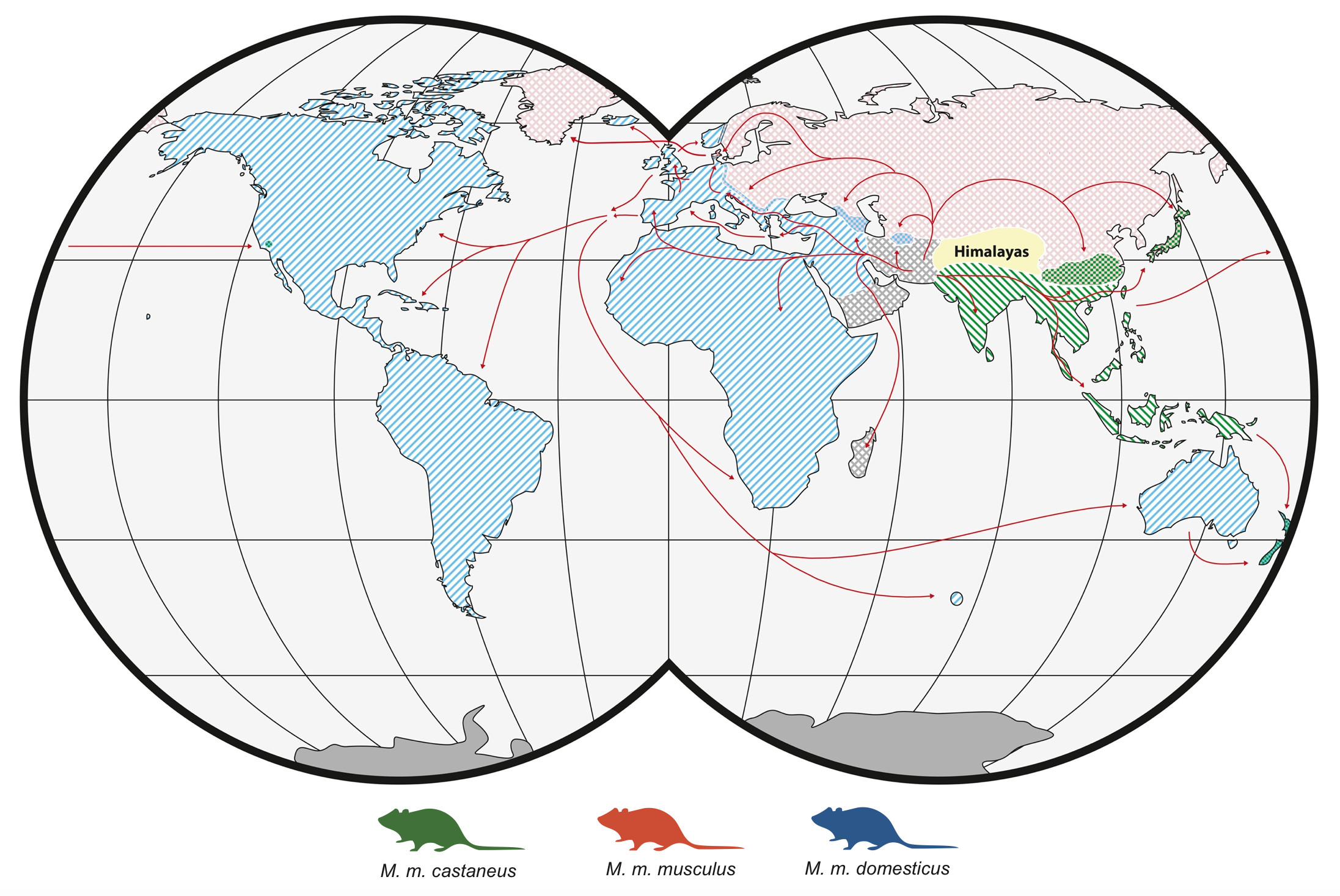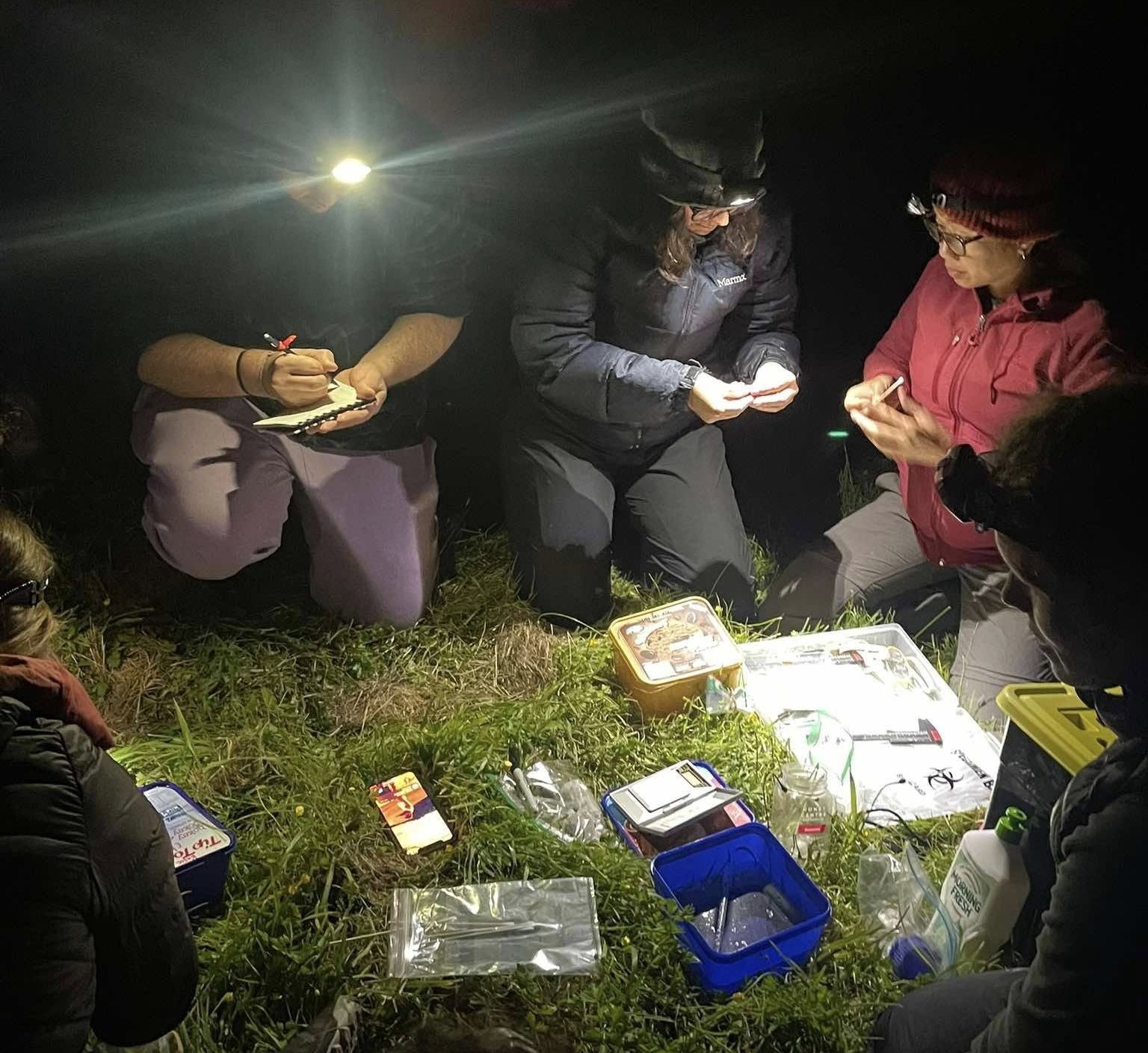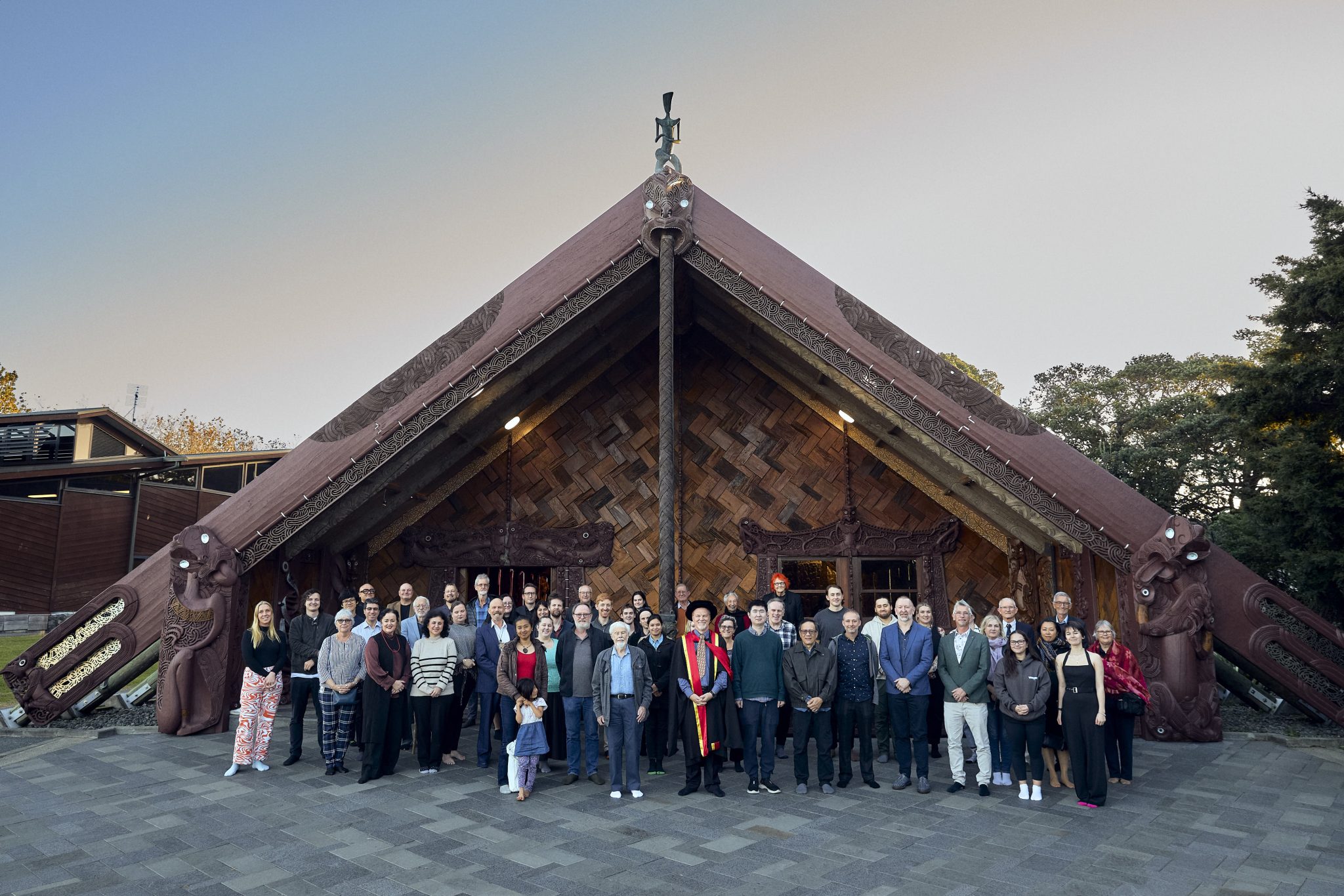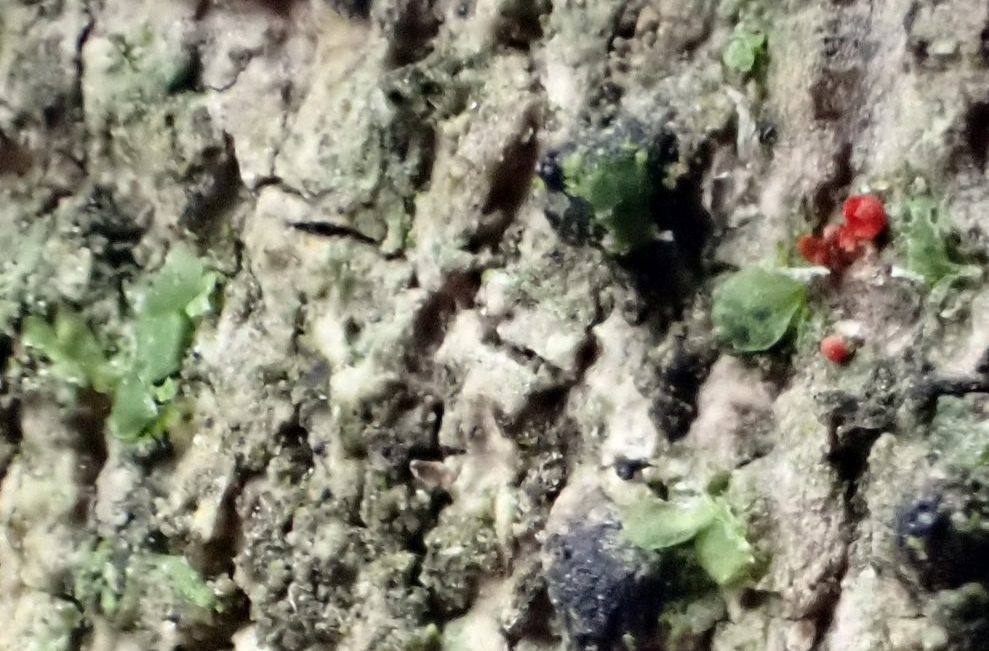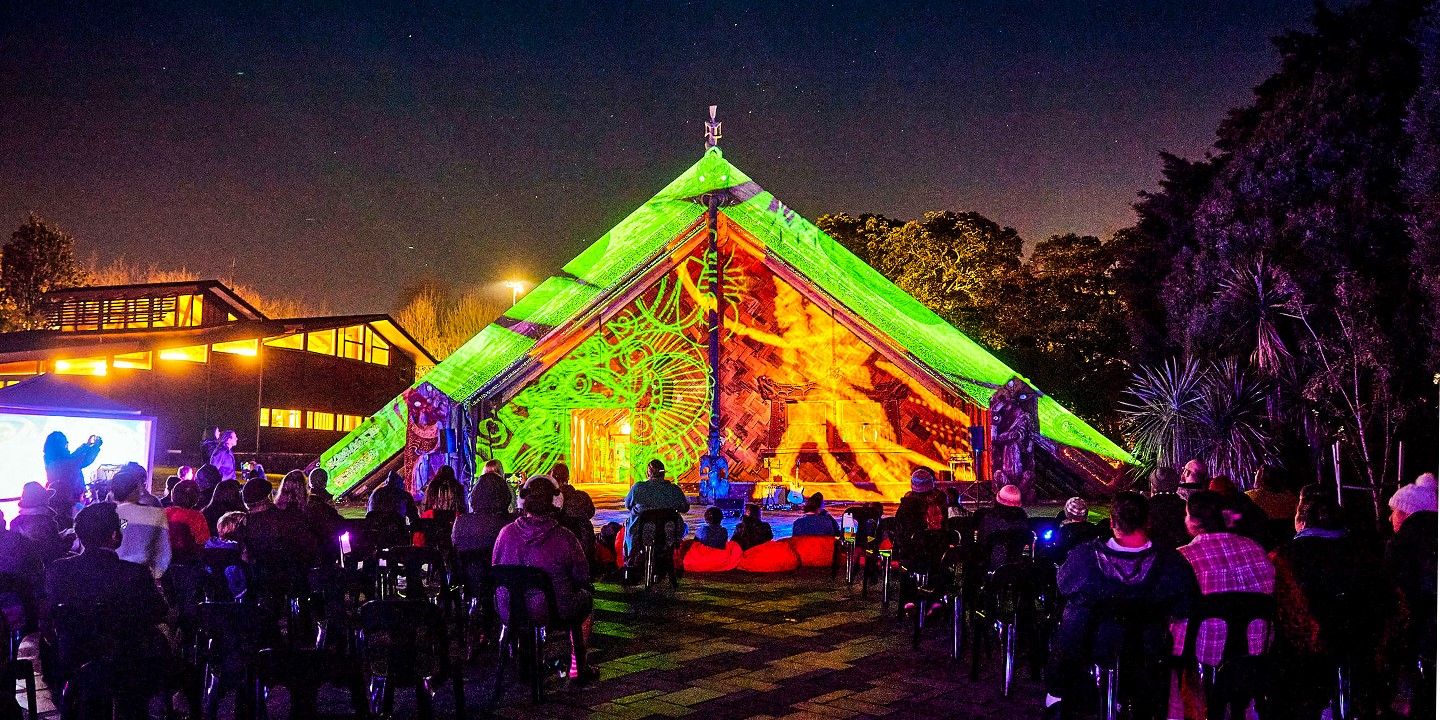It’s great to see two of Unitec’s Environmental and Animal Sciences researchers getting media attention for their fantastic work.
Andrew Veale‘s research caught the attention of NZ Herald science reporter Jamie Morton, who quizzed Andrew on the fascinating history of one of NZ’s least-wanted critters: the mouse.
The story quotes Veale, co-author of a new study just published in scientific journal Royal Society Open Science, as saying, “These mice are, like its people, diverse, with whakapapa tracing across the globe [see image above]… Traces of this ancestry can be uncovered from the DNA of the mice now living here, and from this information we can tell an amazing story of colonisation, invasion, replacement, and population mixing.” Read the full story.

From left: Dr Mark Large, research assistant Hayley Nessia and Dr Dan Blanchon, who worked on the karaka project.
Dr Mark Large talked to Graeme Hill, of Radio Live’s Weekend Variety Wireless, about his research on the stomata of karaka trees. These small holes on leaves control how much carbon dioxide goes in and out of a plant, and can tell us a lot about the changing levels of CO2 in our atmosphere over time.
During the study, Large worked with Ewen Cameron, the herbarium curator at Auckland Museum, to take casts from karaka leaves gathered by Joseph Banks and Daniel Solander during their 1769-70 expedition to New Zealand with Captain Cook. It’s a telling example of how researchers can never predict how their work will be relevant in the future! Listen to the interview.
Find out more about study or research collaboration opportunities with Unitec’s Environmental and Animal Sciences Practice Pathway.
